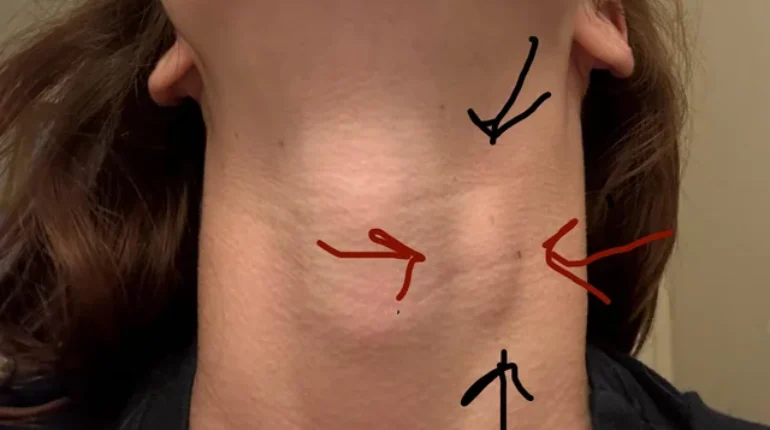📌 What Do Neck Lumps Really Mean?

Posted 12 September 2025 by: Admin
1. Infections
-
Viral Infections – Colds, the flu, and mononucleosis (mono) can trigger swollen lymph nodes as the immune system fights back.
Advertisement: -
Bacterial Infections – Strep throat, abscesses, or skin infections may also cause swelling in the neck.
-
Tuberculosis – This bacterial illness can sometimes produce lumps, especially in lymph nodes.
Advertisement:
2. Enlarged Lymph Nodes (Lymphadenopathy)
-
Causes – Infection, inflammation, or even cancer can lead to enlarged lymph nodes.
-
Tender vs. Painless – Painful lumps are usually linked to infections, while painless lumps could suggest more serious conditions.
3. Cysts
-
Branchial Cleft Cyst – A congenital condition causing lumps on the side of the neck.
Advertisement: -
Thyroglossal Duct Cyst – Typically found in the midline of the neck.
-
Symptoms – Cysts are often round, smooth, and movable. They’re usually harmless unless infected.
4. Thyroid Disorders
-
Goiter – Enlargement of the thyroid gland due to iodine deficiency, Hashimoto’s thyroiditis, or nodules.
Advertisement: -
Thyroid Cancer – A hard, painless lump that grows or changes may be a warning sign.
5. Cancer
-
Metastatic Cancer – Neck lumps can sometimes indicate cancer spread from the lungs, breast, digestive tract, or nearby areas.
-
Lymphoma – Persistent, painless swollen lymph nodes may point to this type of blood cancer.
Advertisement:
6. Salivary Gland Problems
-
Infections or Blockages – Swelling near the jaw or under the ear may be due to salivary gland infections (sialadenitis) or stones (sialolithiasis).
7. Injury or Trauma
-
Post-Injury Lumps – Swelling or lumps can form after trauma, often caused by fluid or blood buildup under the skin.
8. Lipomas
-
Benign Fatty Growths – Soft, non-cancerous lumps under the skin. Usually painless, but may need removal if large or uncomfortable.
Advertisement:
When Should You See a Doctor?
Seek medical advice if:
-
The lump is hard, fixed, or immovable.
-
It’s painless but continues to grow.
Advertisement: -
You experience unexplained weight loss, fever, night sweats, or fatigue.
-
The lump lasts longer than two weeks without improvement.
A doctor can perform an exam, order imaging or lab tests, and possibly a biopsy to determine the cause. Early diagnosis is key, especially if cancer or another serious condition is involved.


















